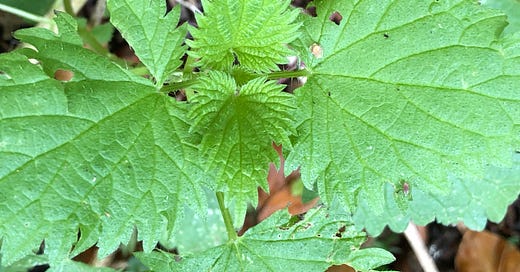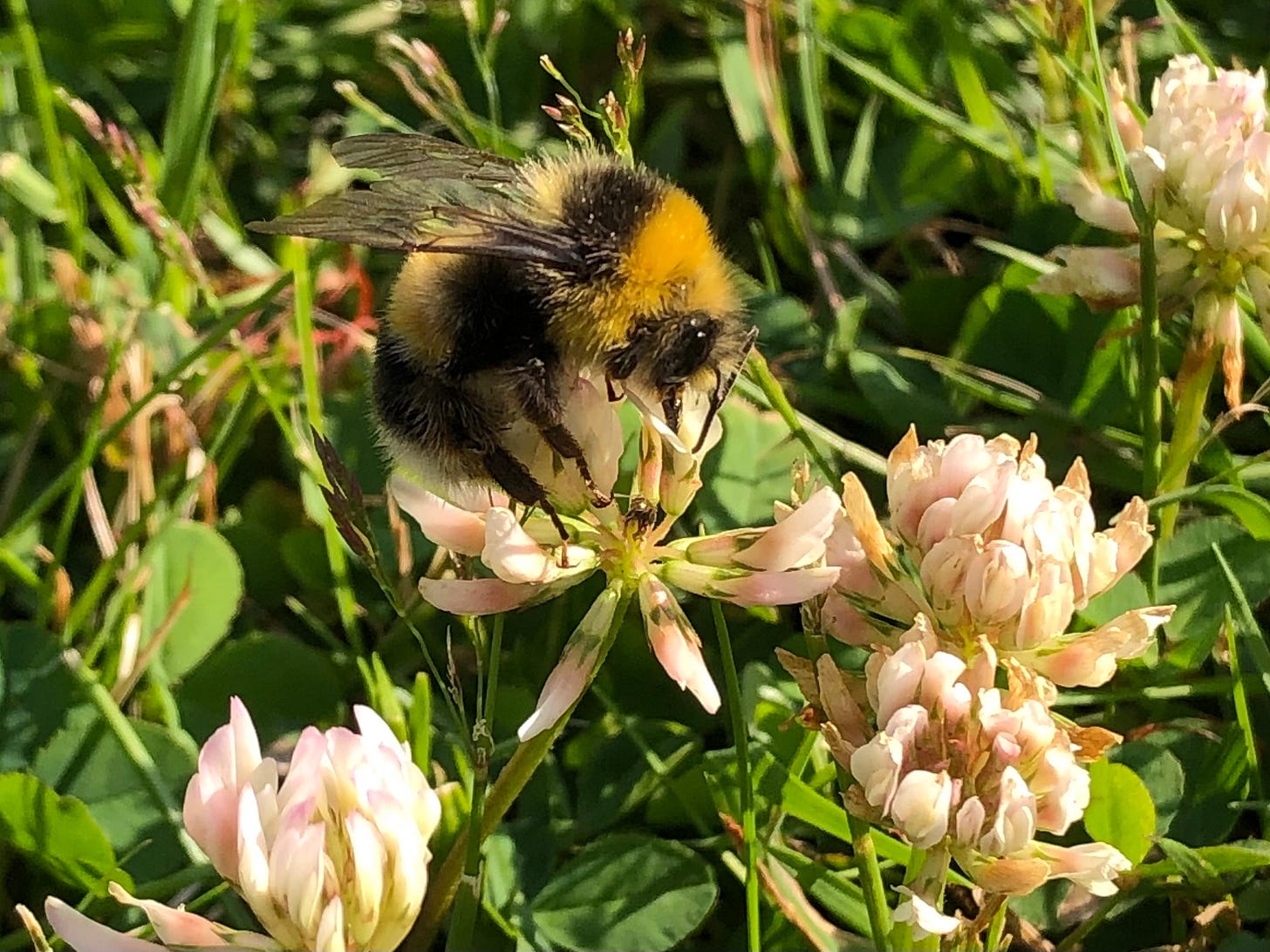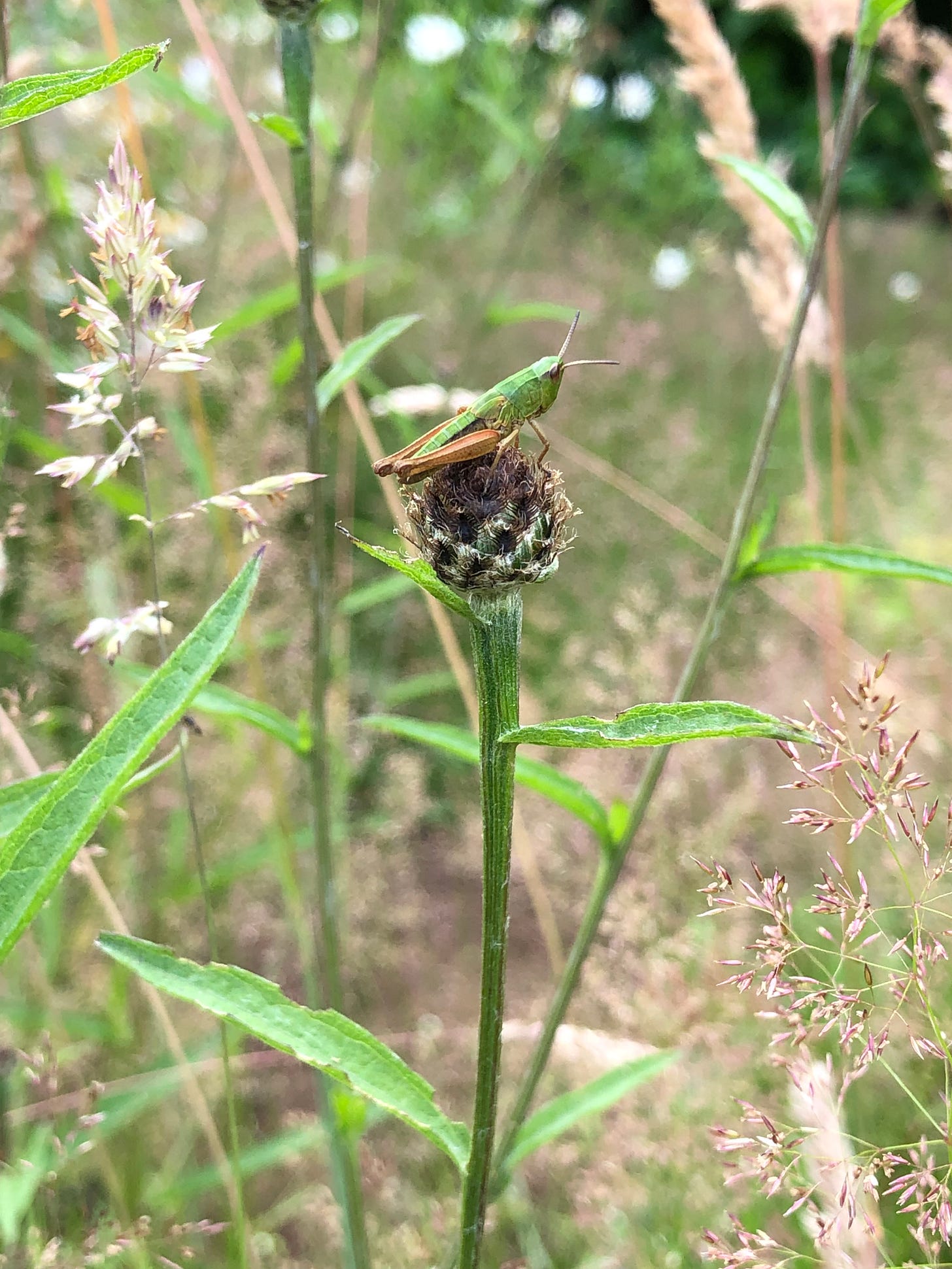What is a weed? I remember being asked this question in a module whilst at hort college (too many moons ago to mention). The simple answer that lodged in my mind was that a weed is a plant in the “wrong” place. I remember our lecturer being particularly enthusiastic about a previous student project that looked at the much-maligned nettle and how it has many useful and valuable properties and benefits.
I suppose the exercise served as a useful reminder that weeds are plants too. They merely happen to be growing in places where humans don’t want them to be. And whilst we might lump them together into a homogenous category as something undesirable, they may actually have properties that aren’t immediately obvious to us or which we don’t know how to value.
But that’s where it ended. A fun little thought exercise. Purely academic.
Because what really changed?
Afterwards - in college, in work, in life - we carried on as normal. In our minds and in our actions weeds continued to be weeds. As something to be controlled, removed and eradicated. We learnt about methods of weed control (including chemical control). We persisted with this language of separation and disconnection because that’s all we’ve known, and quite frankly, it’s just the way of things, isn’t it? What else were we supposed to do? I left hort college and over the course of all the gardening jobs I’ve had I must have spent days, weeks, months of my life getting rid of “weeds”, usually for no discernible reason other than to clear them out. It’s an everyday thing, to hear of “weeds”, including nettles, being talked about disparagingly and negatively.
And whilst in my head, I understood that weeds are plants too, there was little further questioning. Little change in my actions.
Why does it matter?
Calling plants “weeds” may seem inconsequential but it matters because the language we use affects how we frame things. It affects how we see the world. Which in turn affects our behaviour. If the climate emergency, biodiversity crisis and habitat loss we are facing is showing us anything, it is that our relationship with the natural world is broken. These major crises we are facing are directly due to human behaviour. We are out of balance and need to drastically change our ways and fast.
The significance of the way we talk about and see “weeds”, is that it’s revealing of our broader, troubled relationship with the rest of the living world.
Back in January I listened to an online talk by Rebecca Hosking (former BBC camera woman who now farms regeneratively in Devon), called Sharing the Land with All Life, which she gave as part of the 2021 Oxford Real Farming Conference (ORFC). In it she talked about language - how it frames our way of thinking and affects our behaviour. When it comes to words such as “nature”, “weeds” and “pests” - this is the language of mastery and dominance. It’s reflective of our broken, destructive, abusive relationship with the rest of life on Earth. She makes the point that, if we want a positive relationship with species on our land, we don’t call them “nasty names”.
Perhaps we can begin building positive relationships by using a language of care and reframing how we see things. How would we feel if we begin calling “weeds” what they actually are: e.g. “wild plants”, or by their names. As Rebecca points out, changing language to one of warmth starts to change behaviour. Our behaviour is influenced by our thought processes, which is shaped by the words and metaphors we use. In many indigenous cultures there is no separation between humans and “nature” - in fact many do not even have an equivalent word.
Embody the change
How do we change our relationship with the natural world to one of respect, rather than dominance and control?
Can we make an effort to get to know our plants and more-than-human kin? Can we practice properly noticing, seeing and paying closer attention?
I’m reminded of this passage from Robin Wall Kimmerer’s book, Braiding Sweetgrass:
“…I see some species I recognize and many I do not, so I walk as Original Man may have done, seeing them for the first time. I try to turn off my science mind and name them with a Nanabozho mind. I’ve noticed that once some folks attach a scientific label to a being, they stop exploring who it is. But with newly created names I keep looking even closer, to see if I’ve gotten it right. And so today it is not Picea sitchensis but strong arms covered in moss. Branch like a wing instead of Thuja plicata.
Most people don’t know the names of these relatives; in fact, they hardly even see them. Names are the way we humans build relationship, not only with each other but with the living world. I’m trying to imagine what it would be like going through life not knowing the names of the plants and animals around you. […] …I think it would be a little scary and disorienting—like being lost in a foreign city where you can’t read the street signs. Philosophers call this state of isolation and disconnection “species loneliness”—a deep, unnamed sadness stemming from estrangement from the rest of Creation, from the loss of relationship. As our human dominance of the world has grown, we have become more isolated, more lonely when we can no longer call out to our neighbors.”
When I arrived in my current garden, which I have the good fortune and privilege to care for, this process was accelerated partly out of necessity. I realised that I was going to have to start reframing my mind for the sake of preserving my own peace and enjoyment of my garden. Instead of beating myself up all the time about having “weeds” or seeing my garden as “imperfect” I chose to change my view and understanding of what was in front of me. It was helped by the fact that we’ve inherited a beautiful wildness here with an abundance of wildlife and wild flowers. If I was willing to see through a different lens, there was so much beauty here without me doing very much. In fact, my initial impulse to tidy and police the living things in the garden and thinking I had to live up to external ideas of beauty and perfection were only serving to remove and destroy the beauty that was here and the homes of those I shared this space with.
Reframing the way I see the wildness in my own garden made me appreciate it more. For example, I began looking at the nettles here in a different, more intimate, light. I know their favoured spots in the garden. There’s a happy stand of them at the very back of the garden, at the edge of a clearing under the giant beeches, where they catch the rays of the morning sun. It’s my favourite patch for picking bright green tips for fresh nettle tea in the spring. Then there’s another healthy patch at the edge of the canopy of the old magnolia. Its roots sit in dappled shade but the aerial parts bask in a southerly light the whole day long. It grows robustly tall and huge and likes to arch over the edge of the path around the meadow area, giving us little barbed reminders of its presence if we brush past too closely with bare summer skin and without paying proper attention.
Go deeper
None of this has been to say that we should never weed. Or that anyone is a “bad” person for weeding (can we agree to let go of unhelpful binaries that bind us?). But if we are to become more aware, more conscious, more intentional in our relationship with the earth, then shouldn’t we at least be clear about what we are doing and why?
Why do we call them weeds? What effect does this have on our relationship with the living world? How might it impact on our behaviour? Why do we think and speak and behave in this way? Why are we compelled to clear them, what purpose is it serving?
I have the immense privilege of being part of a coaching group at the moment. It is a safe and loving container, the support and nourishment of which I’m not sure I have ever felt the likes of before. Our teacher/coach is always gently nudging us to go deeper: what is the thing behind the thing? I take this to mean, keep asking the questions until we get to the truth, to the heart of the matter.
This process can be extended to all parts of our life. It can even begin with a question as simple as “What is a weed?”. Where does this question lead you? The thing with hort college me is that I didn’t probe very much further. Yes, I carried that germ of thought with me, but I didn’t go deeper at the time. I got it: weeds are plants too, they have names too. Now, when I ask the question, it leads me to wonder about the very heart of our relationship with all other living beings. How even our view of and use of the word “nature” is problematic in itself. It has led me to begin to question the root of this disassociation and everything it has affected (or infected). It has led me to ask: how do I begin to embody the changes I want to see in our relationship with the rest of life on Earth?
How do we begin to call out to our neighbours we share our land and gardens with?
Connecting the dots
A few weeks ago The Slow Factory published an Instagram post titled “Ecosystems Over Aesthetics” (by Céline Semaan). This seemed a fitting landing place for this thought process. There are those who like to dismiss conversations like this because it can be difficult to imagine another way of doing things. Perhaps they fear this is a dismissal of gardening for aesthetics or of design entirely. I don’t believe this to be the case and I think the post provided much relevant food for thought:
“…I am not saying that aesthetics is not an important design consideration; I am saying that when in conflict or contradiction, ecosystem health must take priority over aesthetics. […] Ecosystems over aesthetics is the intentional prioritization of environmental justice over the whim of the creative and aesthetics. […] This fundamental design constraint must be adapted by all industries, if we are to avoid climate collapse, mass extinction and all the other catastrophic results of centuries of extractive and polluting imperialist capitalism.”
~ Céline Semaan
Should this not apply when it comes to gardening, garden and landscape design too? It feels particularly pressing when you consider the habitats and species that gardens and landscapes have the physical capacity to directly support.
How do we open our minds to the fact that we need to begin incorporating this way of thinking in our gardening practices: from the clearing of ground of wild plants, to the use of toxic chemicals, to the removal of peat for cheap growing medium. Why are we doing it? What are we prioritising?
When will we connect the dots?
Our language, our framing, our relationships, our behaviour matters.
All photos in this article credited to Sui Searle
If you have an article you would like to pitch for publication on Radicle, please drop an e-mail to decolonisethegarden@gmail.com






